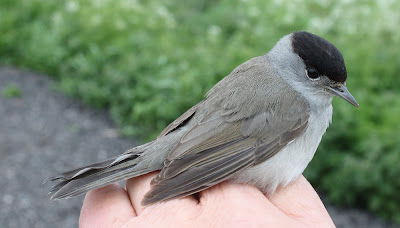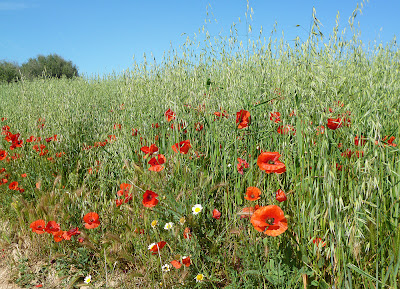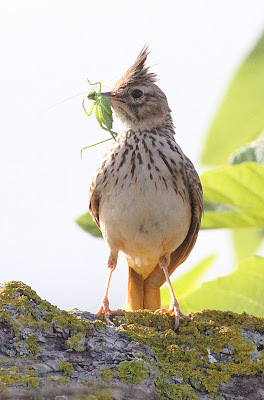Three weeks without any mist netting seems like an eternity but last night everything appeared reasonable enough for a session so Will and I met up on Rawcliffe Moss for a not-before-time crack at the plantation.
The threat of coastal mist had materialised into on the inland moss almost a light fog which then lingered around until after 0930. These sorts of conditions tend to make birds stay put, not move about an area much, and less likely to travel any sort of distance.
From the implied excuse above readers will have already deduced that our catch was somewhat disappointing with just 12 birds caught, although this included a good selection of species and interesting recaptures from previous years. New birds: 4 Whitethroat, 1 Blackcap, 1 Reed Bunting, 1 Chaffinch, 1 Reed Warbler. Recaptures: 2 Willow Warbler, 1 Whitethroat, 1 Blackbird.
Even in the net we recognised one of the Willow Warbler recaptures AVC117 as a resident male from last season. Last year the bird had pale plumage patches on its head, this year even after full moult and a winter in Africa it had the same pale patches, if anything slightly more extensive.
Willow Warbler
We catch a few Reed Warblers here most years, even though there are no reeds in the vicinity. This morning’s bird was in the top panel of a net in front of fairly mature trees, a cautionary tale that birds don’t always abide by the rules their names infer.
Reed Warbler
It was good to handle Whitethroats again, a couple of today’s older males almost as grey headed as a Lesser Whitethroat.
Whitethroat
Blackcap
The mist limited our wider vision, restricting our birding to 1 Little Owl, 1 Kestrel, 1 Buzzard, 5 Blackcap, 4 Skylark, 4 Corn Bunting, 1 Great-spotted Woodpecker, 4 Lapwing, 2 Oystercatcher, 1 Pied Wagtail, 2 Yellowhammer, 20+ Tree Sparrow, 2 Reed Bunting and 2 Lesser Redpoll.






















































.jpg)












